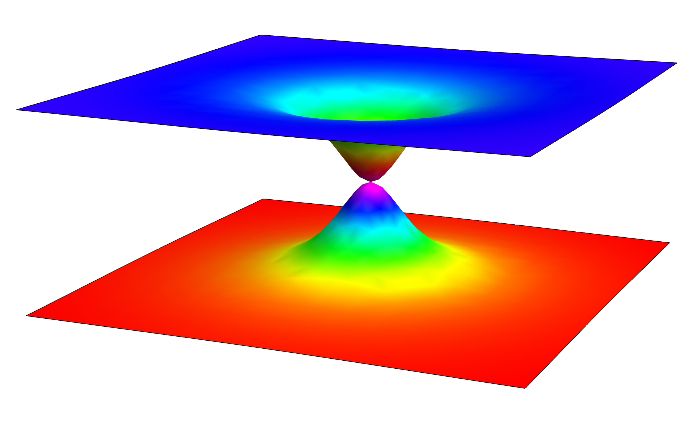Under ordinary conditions quarks and gluons are confined inside the protons and neutrons contained in the atoms that make us and the things around us. However, quarks and gluons may form a completely different type of matter at the core of neutron stars, where the strong gravitational force compresses them to the highest densities known in Nature. It is conjectured that one such phase may be a “color superconductor”. This is an analog of the ordinary electromagnetic superconductors that are used, for example, to make trains levitate. The key difference is that, in a color superconductor, the electromagnetic force is replaced by the strong nuclear force. Color superconductors might be discovered experimentally via the gravitational wave signals emitted in neutron star mergers like the one first detected in August 2017.
The presence of the strong nuclear force makes the theoretical description of color superconductors by conventional methods extremely difficult. For this reason we have used a string-theoretical tool known as “holography”, which maps the properties of matter in our four-dimensional world to those of … string theory in ten dimensions!
We have shown that, in the string theory description, the properties of the color superconductor are encoded in the bending in the extra dimensions of higher-dimensional objects known as “D-branes”, as shown in the figure. This geometrization of the problem provides a completely new (and higherdimensional) perspective on color superconductors. As usual in physics, such a new viewpoint brings with it a new level of understanding that we are just beginning to unravel.
Reference
